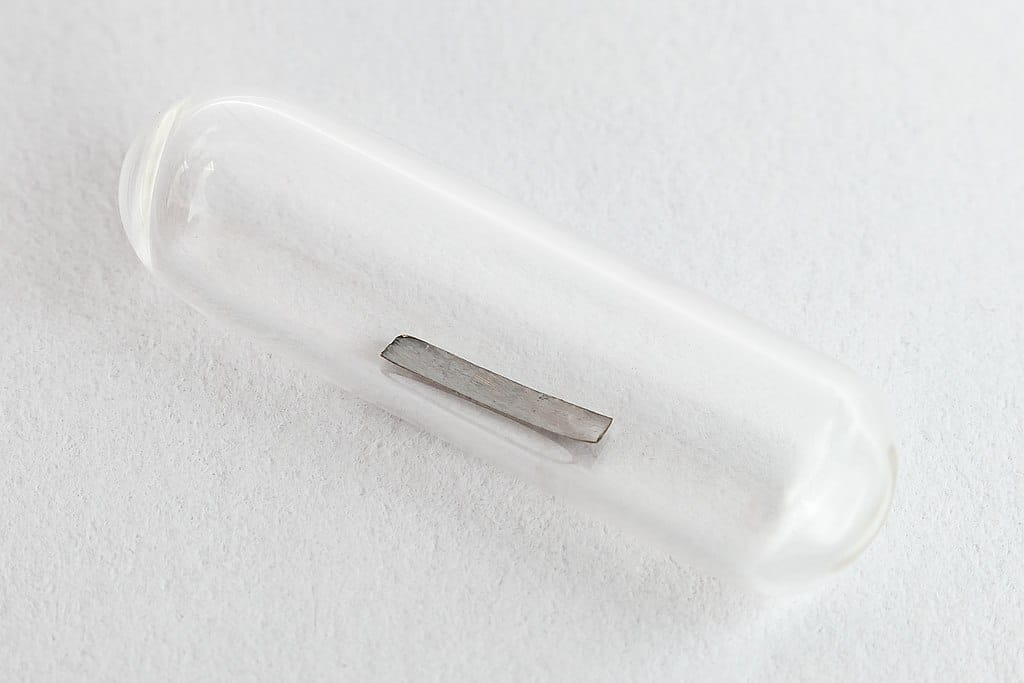technetium

Technetium is a chemical element with atomic number 43 and the symbol Tc. It is the lightest element with no stable isotopes and the first element to be artificially produced. The name comes from the Greek τεχνητός (technetos), meaning artificial.
Technetium is used as a tracer chemical in medical testing and as a standard for beta radiation emissions in equipment calibration. It is also used as a catalyst in some chemical reactions, but radiation safety limits this use.
A number of researchers in the nineteenth century claimed to have discovered element 43, but all were found to have been other elements. In 1908, Masataka Ogawa mistook element 75, now known as rhenium, for element 43. In 1925, Walter Noddack, Ida Noddack (née Tacke), and Otto Berg thought they had discovered it, dubbing it masurium, but were subsequently shown to be mistaken.
Finally, in 1937 Carlo Perrier and Emilio Segré definitively discovered element 43 by bombarding a sample of molybdenum with deuterium and neutrons. They announced their discovery in both an Italian journal and in a letter to the journal Nature but did not propose a name at the time. The naming would wait for some ten years. Segré, a Jew, was visiting the University of California, Berkeley in 1938 when Mussolini’s government passed antisemitic laws that barred him from university positions in his native Italy. He remained in the United States, eventually working on the Manhattan Project and becoming a U.S. citizen. Segré would share the award of the 1959 Nobel Prize in Physics for the discovery of the antiproton.
Following the war, Perrier and Segré proposed the name technetium in a 1946 letter to Nature, that was published the following January:
It seems appropriate now to give a name to this element, as suggested by Paneth, and we would like to propose the name of “technetium,” from the Greek τεχνητός, artificial, in recognition of the fact that technetium is the first artificially made element. The corresponding chemical symbol should be “Tc.”
Naturally occurring technetium, a product of fission of uranium ore, was discovered in 1961. But virtually all technetium in use today is artificially created.
Sources:
Miśkowiec, Pawel. “Name Game: The Naming History of the Chemical Elements—Part 3—Rivalry of Scientists in the Twentieth and Twenty-First Centuries.” Foundations of Chemistry, 12 November 2022. DOI: 10.1007/s10698-022-09452-9.
Oxford English Dictionary, third edition, September 2009, s.v. technetium, n.
Perrier, C., Segré, E. “Alcune proprieta chimiche dell’elemento 43.” Rendiconti, Reale Accademia Nazionale dei Lincei, 25, 1937, 723–730.
———. “Radioactive Isotopes of Element 43” (13 June 1937). Nature, 140, 31 July 1937, 193–94. DOI: 10.1038/140193b0.
———. “Technetium: the Element of Atomic Number 43” (29 November 1946). Nature, 159, 4 January 1947, 24. DOI: 10.1038/159024a0.
Photo credit: Marco Cardin, 2020, Wikimedia Commons, licensed under a Creative Commons Attribution-Share Alike 4.0 International license.